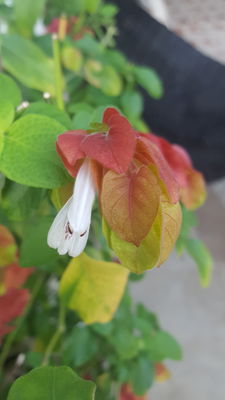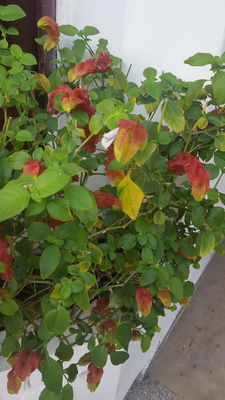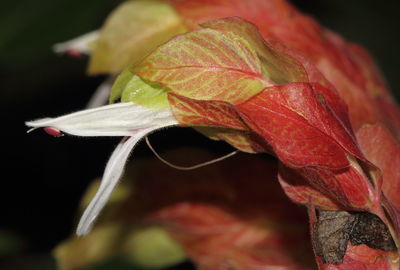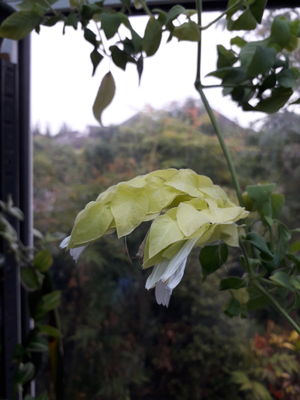-
General Description
-
Justicia brandegeeana is commonly known as shrimp plant because of the colour and shrimp-like appearance of its inflorescence.
There are around 600 species of Justicia distributed across the tropics and into the warmer parts of North America. Many are grown as ornamentals in tropical and subtropical gardens and as conservatory plants in temperate areas. The genus was named for James Justice (1698-1763), a passionate, though somewhat eccentric, Scottish horticulturist and writer.
-
Species Profile
-
Geography and distribution
Justicia brandegeeana is native to Mexico. It has naturalised in parts of Ecuador and Florida, USA. It is widely cultivated elsewhere.
Description
The shrimp plant is an evergreen shrubby perennial, reaching 1.5 m tall and wide with weak branching stems. The soft green leaves are ovate-elliptic (egg-shaped), usually 5-8 cm long and downy on the underside. Reddish-pink overlapping bracts (modified leaves) enclosing small white flowers are produced throughout the year. The five petals are united into a white two-lipped corolla-tube with mauve markings on the lower lip. The two stamens have dark mauve anthers. Cultivated forms may have bright yellow or lime green bracts.
Pollination is usually by hummingbirds.
Uses
The Huastec people of Mexico used Justicia brandegeeana as a traditional medicine for treating a variety of ailments, including dysentery and other gastrointestinal disorders and treating wounds. Today, J. brandegeeana is widely cultivated as an ornamental throughout the tropics and subtropics and as a greenhouse plant in cooler climates. It has received an Award of Garden Merit from the Royal Horticultural Society.
Cultivation
Shrimp plants thrive in containers and survive well as houseplants with a long flowering season. They can live for many years but need to be pinched back continually to avoid the plant becoming too tall and leggy. Propagation is by stem cuttings in spring or by division.
This species at Kew
Shrimp plant can be found in the Palm House.
Pressed and dried specimens of Justicia brandegeeana are held in Kew's Herbarium, where they are available to researchers from around the world by appointment. The details of some of these can be seen online in the Herbarium Catalogue.
-
Distribution
-
Mexico
-
Ecology
-
Semi-arid environments.
-
Conservation
-
Not evaluated according to IUCN Red List criteria.
-
Hazards
-
None known.








